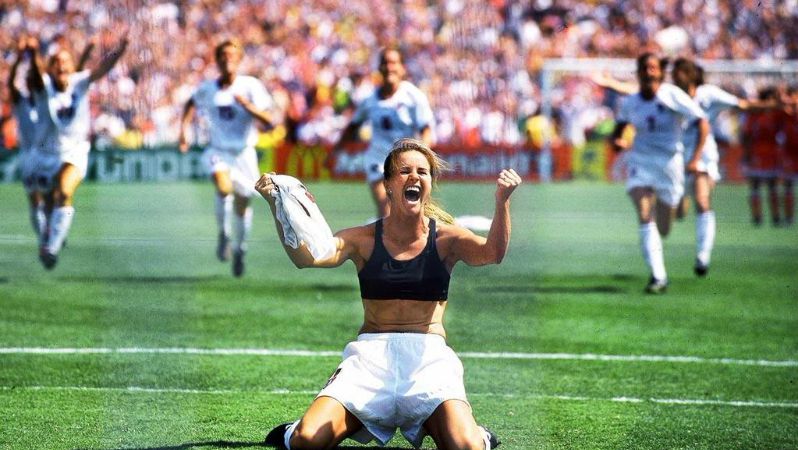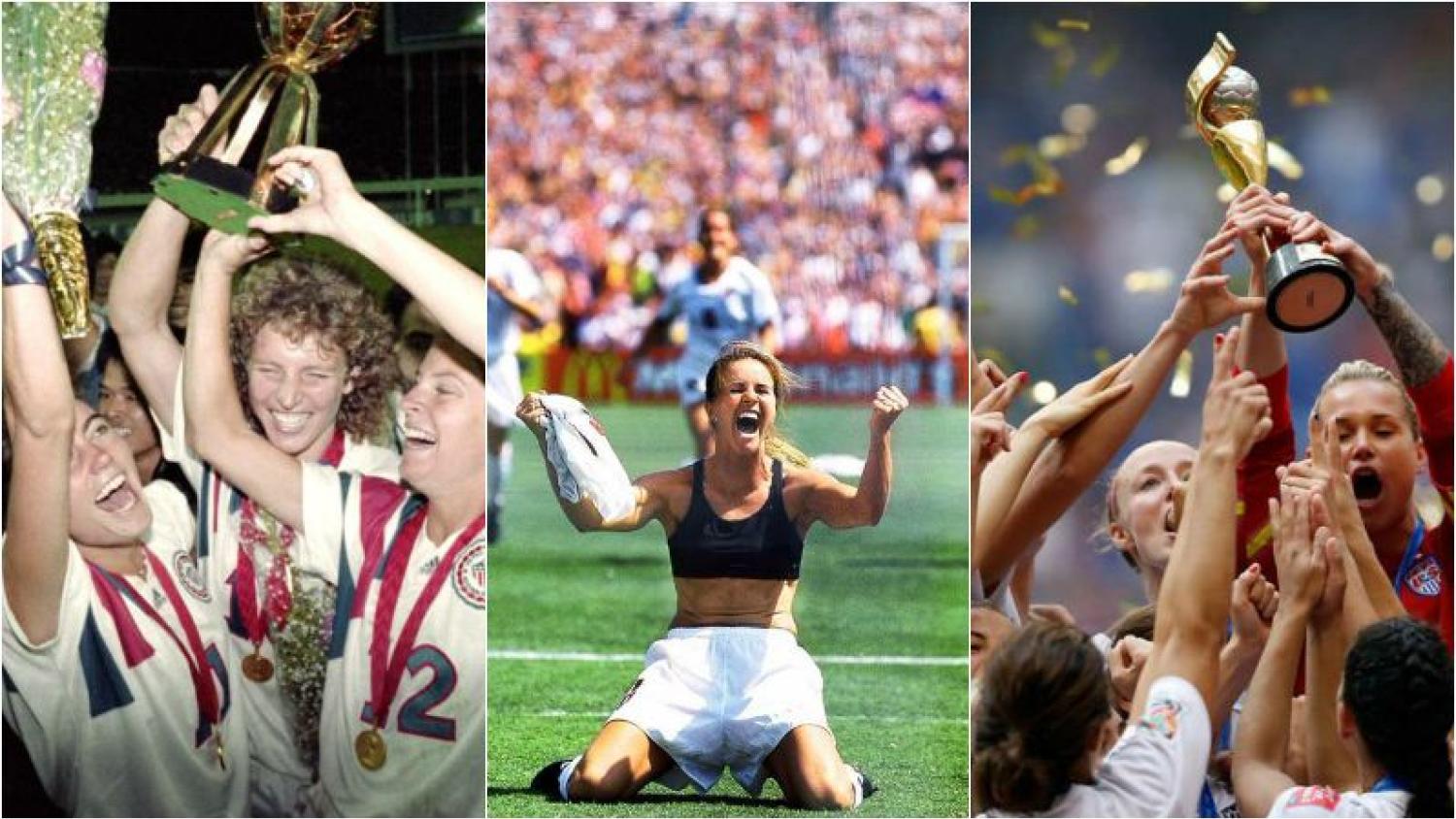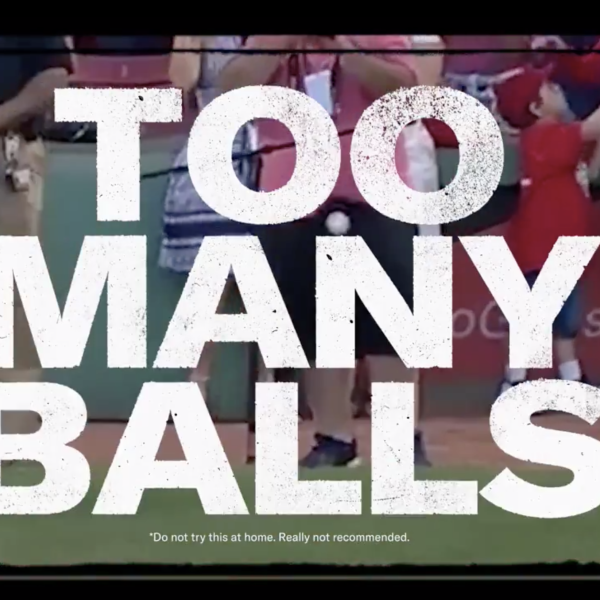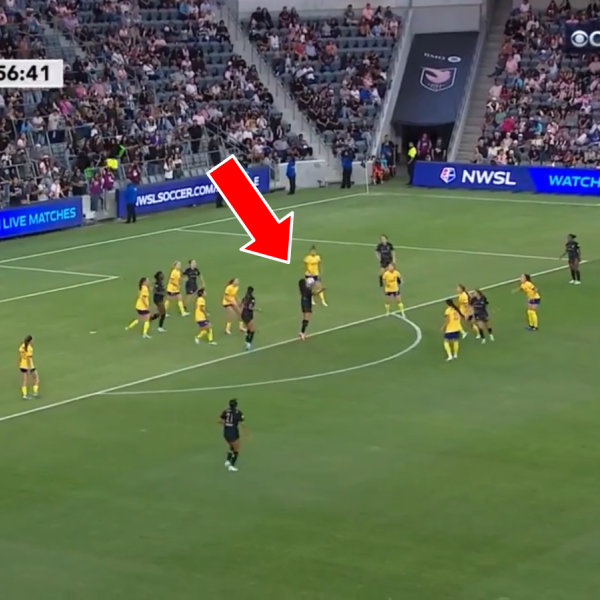Entire lifetimes have been spent hashing out what qualities give people worth. Those qualities change as often as they are discovered; they can vary as widely as the names of the people they belong to.
In the world of sports, however, society teaches us what to value in a very specific kind of human, an athlete. It teaches us to value only one thing: whether or not an athlete wins. It seems like the ultimate meritocracy: if an athlete deserves to win then they will win, and we will applaud them for doing so. Sometimes it works just like that, but not always.
Like so many other things, the value of an athlete is not guaranteed.
“[I was at the European Football Symposium held in London in November of 1998] to make a presentation about the Women's World Cup, to be held the following year. [I] showed a video and some slides. People were awestruck that the U.S. Soccer Federation had planned an event of such magnitude around women's soccer. The plenary assembly was about to break into separate sessions when a man stood up. He was from an enlightened European culture, not a backward country. He pointed to a poster showing Brandi Chastain and a Norwegian player fighting for a ball and said, ‘I look at that and I see ugliness and muscles...This is not what this is supposed to be about.’”
“I replied, ‘If this poster were of men playing, you would have seen fitness, athleticism, commitment.’”
– an anecdote on Tony DiCicco: then the COO of the now defunct WUSA, recently a commentator for Fox Sports coverage of the 2015 Women’s World Cup.
Today, with the glory of the United States’ 2015 Women’s World campaign being the standout memory of the summer, it is easier than ever to lose sight of how far society has come in regards to accepting and supporting female athletes. For all of the shock and awe that Carli Lloyd inspired with her hat trick performance in the final, there a deserves to be an equal amount reserved for the fact that the United States Women’s National Team even exists in the first place.
Reading about the conditions members of the USWNT endured as they tried to represent their country in the first ever Women’s World Cup in 1991 is a reality check. This was not a team of girl scouts coddled into competition.
"This team has probably given up more money for this run at the World Cup than any team ever," said Michelle Akers-Stahl, the eventual Golden Ball winner at the 1991 tournament, said before the games began. "The players have all quit their jobs two or three times. Nobody has any money...One of the jokes is join the national team and lose 10 pounds because we didn't have enough money for food."
At a time when their male counterparts were receiving $10,000 bonuses just for qualifying, the USWNT was cracking self-deprecating weight loss jokes as they got ready to represent their country.
But, if the conditions endured by the men’s and women’s teams were incomparable at the time, then so too were their performances. The men’s team couldn’t make it past the group stage of the 1990 World Cup, and and prior to that hadn’t qualified for the competition in 40 years. In 1991, the USWNT won all three of their group matches by an average of three goals. Their success continued into the quarter and semifinals, in which they scored 13 goals, and the team eventually found itself getting ready to play in the final of the first Women’s World Cup of all time.
"I think we feel we are on a mission now and no one will get in our way, no matter what," said Michelle Akers-Stahl before the final. “The true importance of winning is that we will impress the 'real' soccer people…I think 10 years from now we will look back on a win here and see it as a beginning.”
The team went on to win the 1991 World Cup Final against Norway by a score of 2-1. It was a historic victory, to be sure, but hardly the end of the road. For those who had achieved it, there was very little to show for their success besides the title of “World Champions.”
Once the players returned home, the realities of being women set back in, and nothing seemed to have changed. Most players from the ’91 team accepted jobs as soccer camp instructors paying $1,800 a week that very same summer. It was a cruel paradox: playing at the highest level of women’s soccer wasn’t as lucrative as coaching at a far lower one.
“They had sacrificed relationships and careers, put everything on hold, then they reached the pinnacle and had nothing to show for it,” Greg Overbeck, the husband of then national team member Carla Overbeck, said at the time.
As much as the 1991 World Championship could be defined by passion, determination, and solidarity, it could also be defined by despair. There was precious little room for hope of a better future when the economic realities of the present prevented players from having one in soccer. There was little encouragement to be found in victory when, not just winning, but being the best in the world failed to change the status quo.
Winning was not enough – was never going to be enough for the women of the 1991 USWNT, but they had to do it in order to take the next step. The ripples that they caused the day they defeated Norway in the final – however shallow, however humbly they began – did indeed grow to a swell; it just took 8 years before it broke and released its energy.
In the meantime, that swell would feed off and help define the ascension of women at the turn of the millennium. Value, like so many other things in life, would not be handed out, it would have to be taken. There is pride in doing so, and that pride was given a very real symbol in 1999, when the USWNT realized it could do more than win; it could win with style.
“My first memory of soccer was when I was about 12 years old. It was actually the first time I played soccer. It was rec soccer. My dad rented a video or book from the library to coach me because he had no idea what soccer was. And, I can remember this very vividly, one of my friends was playing in goal and she went to go save a goal and she broke her wrist and I remember thinking how cool it was that she broke her wrist and I really wanted to break my wrist, even though she was, like, in sheer terror and pain.”
“She got to wear a cast and she was tough, you know, and so it was just kind of cool for me. I was a bit of a tomboy so it was just cool.”
– Nicole Marshall, former member of the Portland Thorns in the NWSL. Marshall was 11 when the USWNT won the 1999 World Cup.
When thinking of the characteristics that define athletes, people are quick to mention things like strength, speed, and mental and physical toughness. These things are what society values in its champions. These are not what society traditionally values in its women. In 1999, that notion would be challenged in a more visible way than it ever had before.
The 1999 Women’s World Cup Final was a spectacle. It was the United States versus China. Every single one of the Rose Bowl’s 92,542 seats were packed to watch the culmination of what had been “the hottest story of the summer; exceeding all expectations.” And, for the first 120 minutes, many of those people, along with the 40 million Americans watching on TV, probably wondered what all the fuss was about.
A zero-zero draw is known to many soccer fans as the bane of the game’s existence. It doesn’t always mean that the game was boring, but for a nation that lacked a deep appreciation for the game at the time, boring is probably exactly what the final felt. 30 minutes turned into 60, then 90, and finally 120 without a goal. In a classic display of the fickle nature of the game, a nation expecting show-stopping drama would get it in the form of a penalty shootout: a practice that is as entertaining as Russian Roulette for anyone with a rooting interest.
Three rounds would go by before either team blinked, and that day misfortune cast its shadow over China. A Liu Ying miss opened the door for the United States. That opening would be taken advantage of two rounds later.

Photo: @JoeESPN590
To say that Brandi Chastain scored the penalty kick that won the 1999 World Cup for the United States is a massive understatement. Yes, the ball went in. Yes, she was the one that kicked it. And yes, the USWNT did indeed win the World Cup. But…
“It was a crowning moment for women everywhere, a moment of freedom, of liberation,” said Marlene Bjornsrud, former general manager of the now defunct women’s team the San Jose CyberRays, a few years after Chastain's iconic penalty. “It was casting off the burden of everything that kept us down and said, 'You can't do that because you are a woman.' It was a moment that screamed, 'Yes, I can.'”
What Chastain did that day echoed across the United States in response to the despair of 1991. Here was a team that, 8 years ago, was all but told to their faces that being the best in the world wasn’t good enough, that they would need to do more, and that there was no guarantee that they would ever be valued in the way they thought they deserved. In rejecting her clothes, Chastain rejected the need to be approved. She was her own woman, who did what she wanted to do, and didn’t need others to find value in what she did.
“I saw the exuberance of being right out there, confident and joyous and totally committed and not ashamed of your body, a body of strength and athleticism: 'This is me. Accept me for who I am,'” said Kinda Miller, the inventor of the sports bra.
It was a moment that said there is no 75 cents on the dollar when it comes to victory; excellency doesn’t care what’s in your pants. Brandi Chastain did nothing less than define a new version of what female accomplishment looks like. It didn’t involve a man on a knee, a dress in a store, or a perfect head of hair. It involved a person whose impulses refuse to let her be second at best.
Of course, the moment had to end. It did not end with the same despair that 1991’s victory ended with, but the highs it caused were unsustainable. It was an extreme, and like all extremes, it shifted what those who experienced it accepted as normal. It helped immensely, but there was never going to be one moment that wrought equality on the world as if by some act of god. Value would continue to have to be fought for, and that’s exactly what the USWNT would do.
“She’s just a beast.”
– USWNT head coach Jill Ellis on Carli Lloyd after her hat trick performance in the 2015 World Cup Final.
Abby Wambach is the highest scoring player in international soccer history. There is no Pele, no Maradona – there won’t be a Messi or a Ronaldo – that can compete with her. 184 goals isn’t just an accomplishment, it’s a benchmark, and it’s owned by a woman.
There will be many that will try to discredit it because it was achieved against women. They will say that they are inferior competition, as if women hold a monopoly on inferior competition. There is no winner, no champion that has ever existed that has not made the competition inferior. Indeed, it is a requirement of winning.
What people fail to see about Wambach’s benchmark is what so many people fail to see when they discredit a winner: that she still had to do it. They ignore the main theme of the meritocracy of sports: no matter what, nothing is ever handed to you; domination never just happens. And, when it comes to the 2015 USWNT, it almost never did.
Through the group stages, the round of 16, and the semifinals the USWNT failed to impress at the 2015 World Cup. It looked disjointed but won against Australia, continued that theme in a 1-1 draw against Sweden, and by all means back pedaled when it won 1-0 against the weakest opponent of its group, Nigeria. By the time it moved past Colombia and China and was getting ready to face the juggernaut that is Germany, it was anyone’s guess who would win.
But then the United States did what winners do: it came through. Germany, a team that had averaged 11.8 shots on goal through out the tournament, was forced to only a solitary shot on goal throughout the entire semifinal matchup against the US. By the time the US scored two second half goals, those watching were witnessing a victory that was unexpectedly convincing.
And then the US did the most valuable thing a winner could ever possibly do: it dominated. Those who are unfamiliar with the nature of soccer will have to trust that the reference to a “shock and awe campaign” earlier in this article was not just appropriate, it was necessary.
Even on paper the USWNTs performance sounds ridiculous: two set piece goals within the first five minutes; a stunning volley to make it 3-0 after 15, and then…
It was unbelievable. If the 1999 World Cup Final was boring from the first regulation kick to the last, then the 2015 version was stunning from the moment the whistle blew, and escalated from there.
There are moments in games that make you understand why sports are special. They make you realize that, no, you had not seen all there was to see, and that you never will; that you can only hope and dream to top the high that you just experienced, because expecting to do so is the kind of misplaced entitlement that can leave you high and dry and wondering why you still live with your parents at the age of 40.
Carli Lloyd and the USWNT gave that to the United States. They did it.
It was a display of dominance with which the 2015 USWNT chiseled its place into history. That place wasn’t handed to it; it took it. The final with which it did so was an extreme, no doubt about it. It wasn’t even what was universally hoped for when it comes to equality; dominance is not the end all be all of what people value. But it was a watershed moment.
Again, that moment had to end, but it was not just another victory. It was the closest thing to gender equality that the United States has ever experienced; it was the meritocracy of sport in unbiased action. Anyone with something close to an appreciation of soccer who sat down and watched that match in its entirety was taken, not by Carli Lloyd's looks or the novelty of women playing a sport, but by the unbelievable display of self belief and execution that took place. No one was excited for any reason other than what was accomplished, and that is something truly worth valuing.
Follow me on Twitter: @yetly







